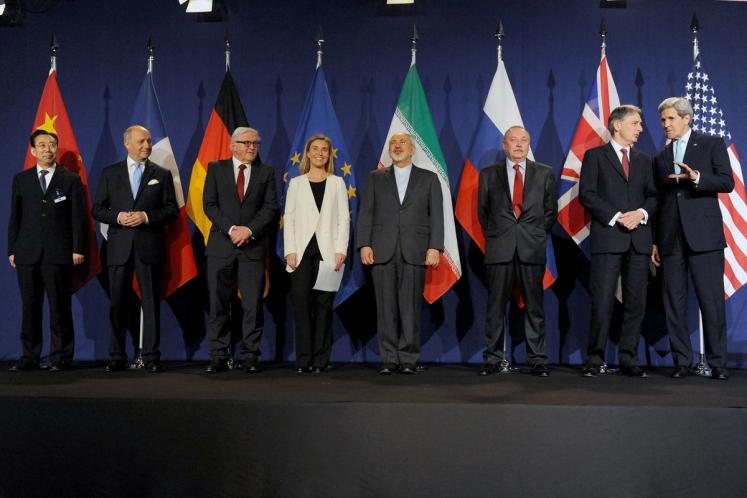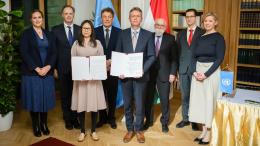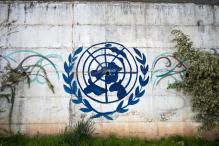On April 2nd, the P5+1 – the United States, United Kingdom, Russia, China, France, and Germany – reached a political agreement with Iran aimed at ending the decade-long standoff over the country’s nuclear program. The parameters of the framework accord include Iran pledging to surrender two-thirds of its installed centrifuges, accepting strong constraints on its uranium enrichment capabilities, and granting regular access to International Atomic Energy Agency (IAEA) inspectors to all of its nuclear facilities in return for international sanctions relief. Negotiators are now looking to finalize the details of the agreement by drafting a Joint Comprehensive Plan of Action ahead of a June 30th deadline.
Several obstacles remain before the “historic understanding” between the two sides can be considered a diplomatic triumph. Interpretations of the framework agreement released separately by the US and Iran suggest that the timing of sanctions relief will be a point of contention in this next phase of negotiations; Iranian foreign minister Mohammad Javad Zarif has already decried the “spin” of the US fact sheet. The idea of granting access to the IAEA “to investigate suspicious sites… anywhere in the country” is unprecedented and requires elaboration, as does the brief mention of a dispute resolution mechanism that is to be established. Negotiations will be further complicated by the political landscape, with the US Senate threatening to pass legislation that would subject the agreement to mandatory Congressional review, a few Iranian hardliners already protesting their side’s “defeat,” and the Israeli reaction being especially hostile.
Still, “the surprisingly specific and comprehensive understanding” provides the foundation for an agreement that – if properly implemented – would alleviate the most fundamental concerns about the Iranian nuclear program. The accord would expand Iran’s timeline for breakout (the time required to produce enough highly-enriched fissile material for one nuclear weapon) from 2-3 months to a year. The restrictions concerning centrifuges would last for 10 years, while those concerning uranium enrichment activity would last 15. Meanwhile, the stringent inspections and transparency procedures – including the implementation of the Additional Protocol, continuous surveillance across all aspects of the country’s nuclear supply chain, and the monitoring of the supply, sale, and transfer of nuclear-related and dual-use materials – decrease the possibility that Iran could get away with cheating.
In return, Iran would gain relief from a bevy of nuclear-related sanctions from previous United Nations Security Council resolutions, as well as sanctions from the US and the European Union. This would mark the end of a stand-off that stems from a formal non-compliance decision reached by the IAEA Board of Governors in 2005 (which followed a series of IAEA reports beginning in June 2003 referring to Iran’s many failures to meet its obligations under its safeguards agreement). For the nuclear non-proliferation regime then, the conclusion of a Joint Comprehensive Plan of Action by the June 30th deadline would be a major boon. It would resolve – at least for the time being – the longest-lasting and highest profile safeguards non-compliance case involving a current party to the Nuclear Non-Proliferation Treaty (NPT). The specific attention paid to Iran’s nuclear breakout capacity sends a message to would-be proliferators, with the unique verification regime to be imposed as a model for future violators.
At the same time, the framework accord leaves Iran its “inalienable right” under the NPT to access peaceful nuclear energy, for instance converting its facility at Fordow to a “nuclear, physics, technology, research center.” The parties also agreed that the country could engage in “limited research and development with its advanced centrifuges” (though it will be forbidden to enrich uranium with those machines for another 10 years). The resolution of the non-compliance case in this manner, with the accompanying affirmation of peaceful use by the recognized nuclear weapon states, thus bolsters the fundamental bargain that undergirds the non-proliferation regime (with non-nuclear weapon states committing not to pursue nuclear weapons in exchange for access to nuclear technology and energy for peaceful purposes, while all states work in good faith towards complete nuclear disarmament). Assurances regarding the peaceful nature of the Iranian nuclear program could also pave the way for progress towards a WMD-free zone in the Middle East.
Even with the agreement, a longer-term perspective of the Iranian nuclear program presents a murkier picture. For Henry Kissinger and George P. Schultz, the limited timeframe of the agreed-upon restrictions might be interpreted as “a dangerous prelude,” rather than a “hopeful interlude.” And as the 1994 Agreed Framework with North Korea demonstrated, even a completed nuclear deal means little without full implementation. For now though, the framework accord between the P5+1 and Iran marks definitive progress. It represents another step forward in a negotiation process reinvigorated by the June 2013 election of Hassan Rouhani to the Iranian presidency. Whether it translates into a final agreement that could have major repercussions for the future of Western relations with Iran and the security dynamics of the Middle East remains to be determined.
Suggested citation: Wilfred Wan., "What the Iran Nuclear Deal Means," UNU-CPR (blog), 2015-04-09, https://unu.edu/cpr/blog-post/what-iran-nuclear-deal-means.



